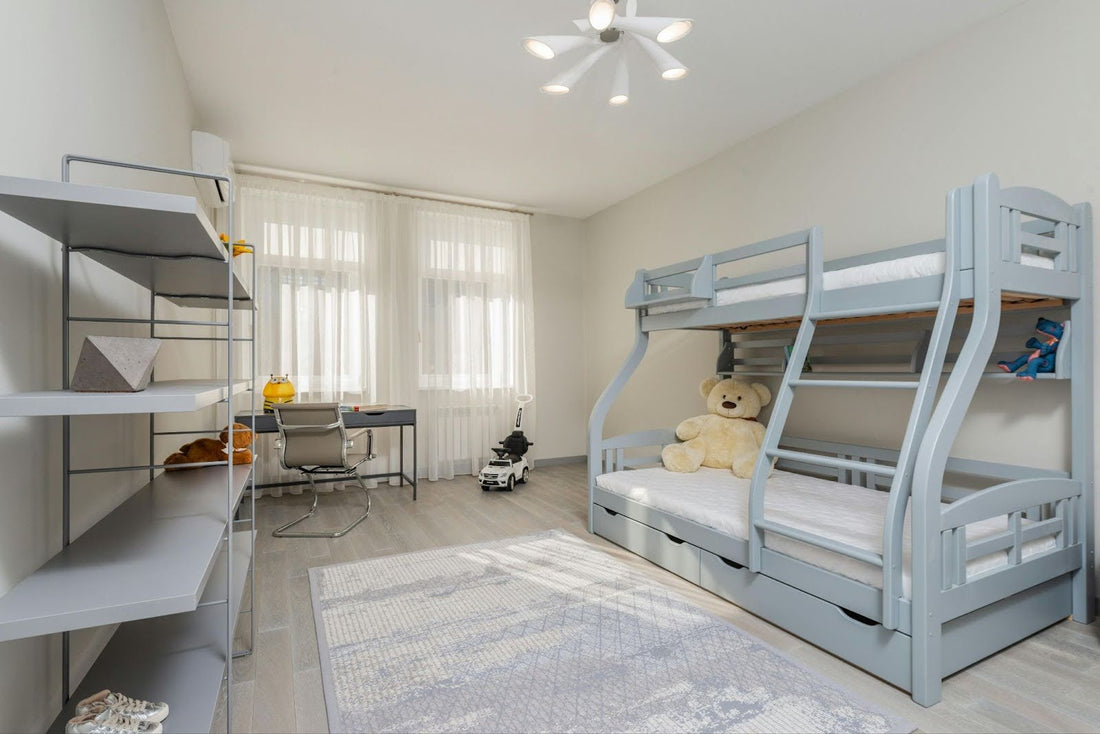
Personalized Touches for Children’s Unique Spaces
Share
A child’s room is more than four walls and furniture—it’s their safe haven, play zone, and creative hub all rolled into one. While functionality matters, it’s the personal touches that make children’s spaces feel truly special. Adding unique details not only reflects their personality but also helps foster a sense of identity and ownership. Whether you’re designing a nursery, a playroom, or a teen’s bedroom, personalizing the space can turn an ordinary room into something magical.
Why Personalization Matters
Children grow quickly, and their rooms often evolve with them. Personalization gives kids a sense of control over their environment, which can boost confidence and creativity. According to a study published in Frontiers in Psychology, children who have spaces tailored to their interests and identities show higher levels of emotional well-being and self-expression. Simply put, adding thoughtful, personalized elements can make a world of difference in how a child experiences their environment.
Start With Colors and Themes
One of the easiest ways to add personality to a child’s room is by choosing colors and themes that resonate with them. For younger children, this could mean bright, playful palettes inspired by nature, animals, or their favorite storybooks. As kids get older, their tastes shift toward more defined themes like sports, music, or travel. Allowing them to have a say in these choices makes the room feel like it’s truly theirs.
Incorporate Their Artwork
Children’s artwork isn’t just refrigerator-worthy—it’s a treasure trove of personality. Displaying their creations on framed boards, cork walls, or gallery-style setups gives them pride in their accomplishments. Rotating their art over time keeps the display fresh and shows them that their evolving creativity is valued.
Custom Embellishments That Shine
Adding personalized embellishments takes a room from standard to standout. Think monogrammed pillows, name signs above the bed, or handmade décor that reflects their hobbies. For a more unique twist, consider custom embroidered badges. These can be sewn onto pillows, blankets, or even backpacks as a fun way to highlight their favorite sports teams, animals, or personal interests.
Functional Furniture With Personality
Furniture doesn’t have to be generic. Adding small, personalized touches can make even functional pieces feel special. Consider:
- Bookshelves with custom-painted backs in their favorite colors.
- Dressers with mismatched knobs chosen by your child.
- Chairs with cushions that feature their name or initials.
-
Storage bins labeled with fun graphics instead of plain text.
These details keep the room practical while still brimming with personality.
Interactive Décor Elements
Personalized touches can also encourage play and interaction. Chalkboard walls, magnetic boards, or cork panels allow kids to change their décor regularly. This type of flexible personalization means the room evolves with their creativity rather than staying static.
Sentimental Keepsakes
Not every detail has to be flashy. Sometimes, the most meaningful touches are tied to family and memories. Framed photos, heirloom quilts, or a growth chart marked through the years can make the space feel grounded in love. These sentimental details provide comfort and a sense of continuity as children grow.
DIY Projects Together
One of the best ways to add unique touches is to involve children in the process. Painting murals, building small shelves, or crafting decorations together makes the space more personal while creating lasting memories. Plus, it teaches children the joy of taking part in creating their own environment.
Balancing Style and Flexibility
While it’s fun to personalize heavily, remember that children’s tastes change quickly. The key is balancing permanent touches with flexible ones. For example, wall paint in a neutral color can be updated with interchangeable bedding, rugs, and artwork that reflect current interests. This way, the space remains unique without requiring a full redesign every few years.
Final Thoughts
Personalizing a child’s space isn’t about perfection—it’s about creating a room that reflects who they are and makes them feel at home. From color choices and artwork displays to sentimental keepsakes and custom embroidered badges, the smallest details often make the biggest impact. By weaving in these unique touches, you can design a space that not only supports growth and creativity but also becomes a cherished part of their childhood memories.




